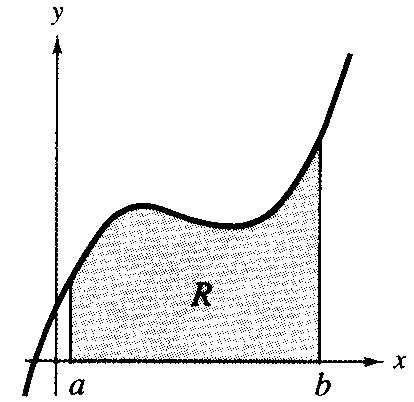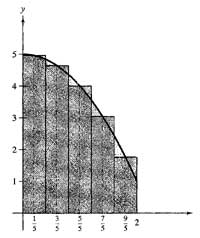

| Our problem here is to develop a way to calculate the area of a plane region R, bounded by the x-axis, the lines x = a and x = b, and the graph of a nonnegative continuous function f, as shown in the next Figure. |
 |
|
|
|
|
 |
|
|
|
|
|
|
|
Evaluate f(x) at the midpoints of these intervals
|
| Area |
|
|
|
|
|
|
|
|
|
|
|
|
| Area |
|
|
|
|
Using the Midpoint Rule
to Approximate a Definite Integral |
| To approximate the definite integral |
|
|
| by the Midpoint Rule, use the following steps. |
|
1. Divide the interval [a,b] into n subintervals, each of width |
|
|
|
2. Find the midpoint of each subinterval |
|
|
| 3. Evaluate f at each of these midpoints and form the following sum |
|
|